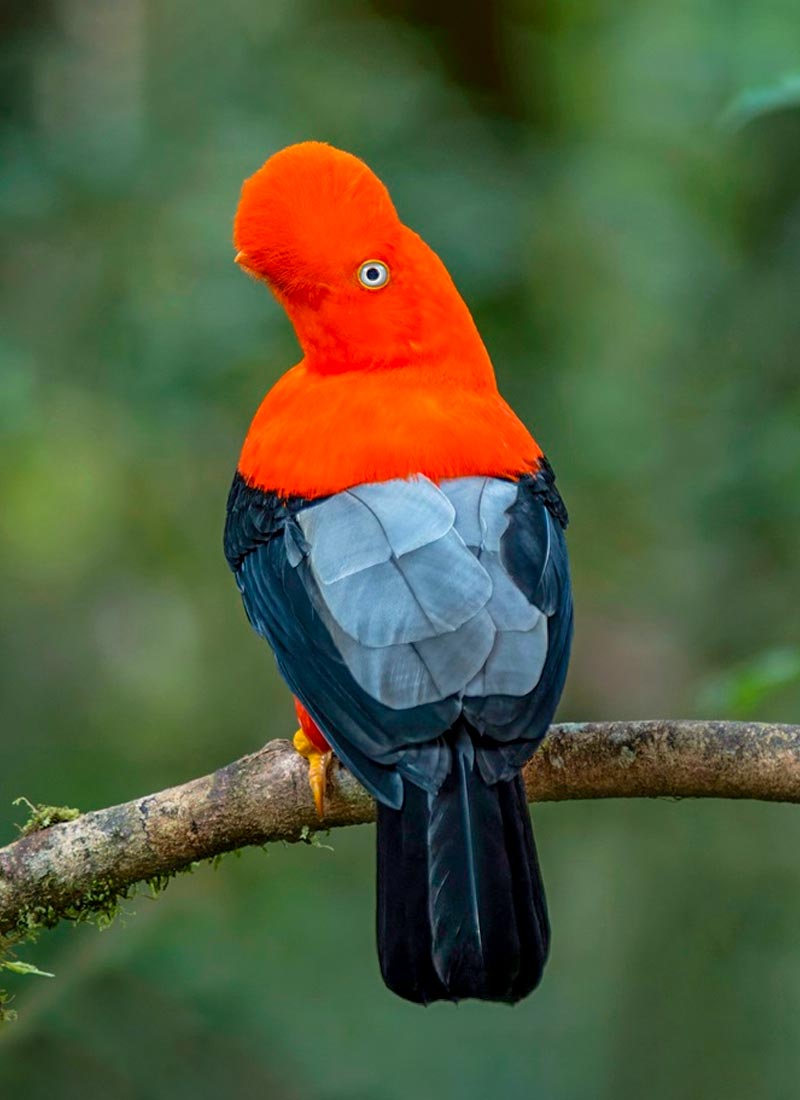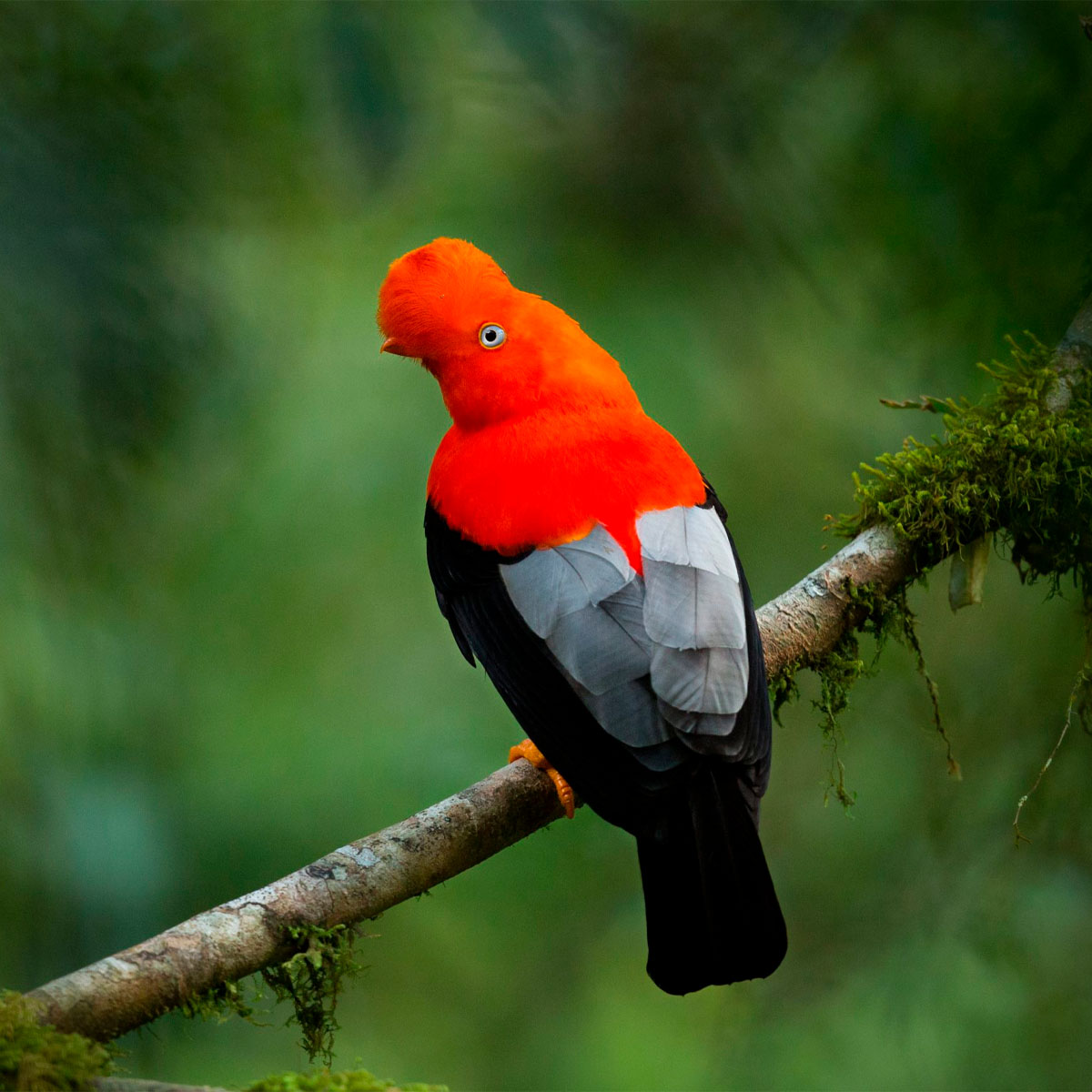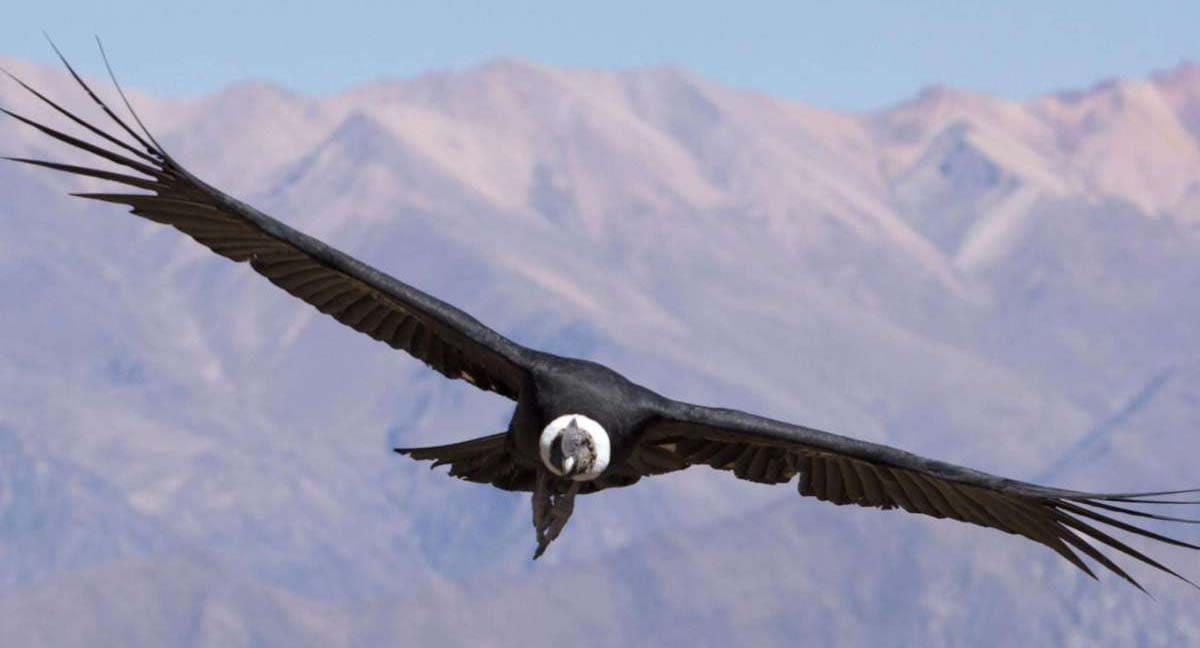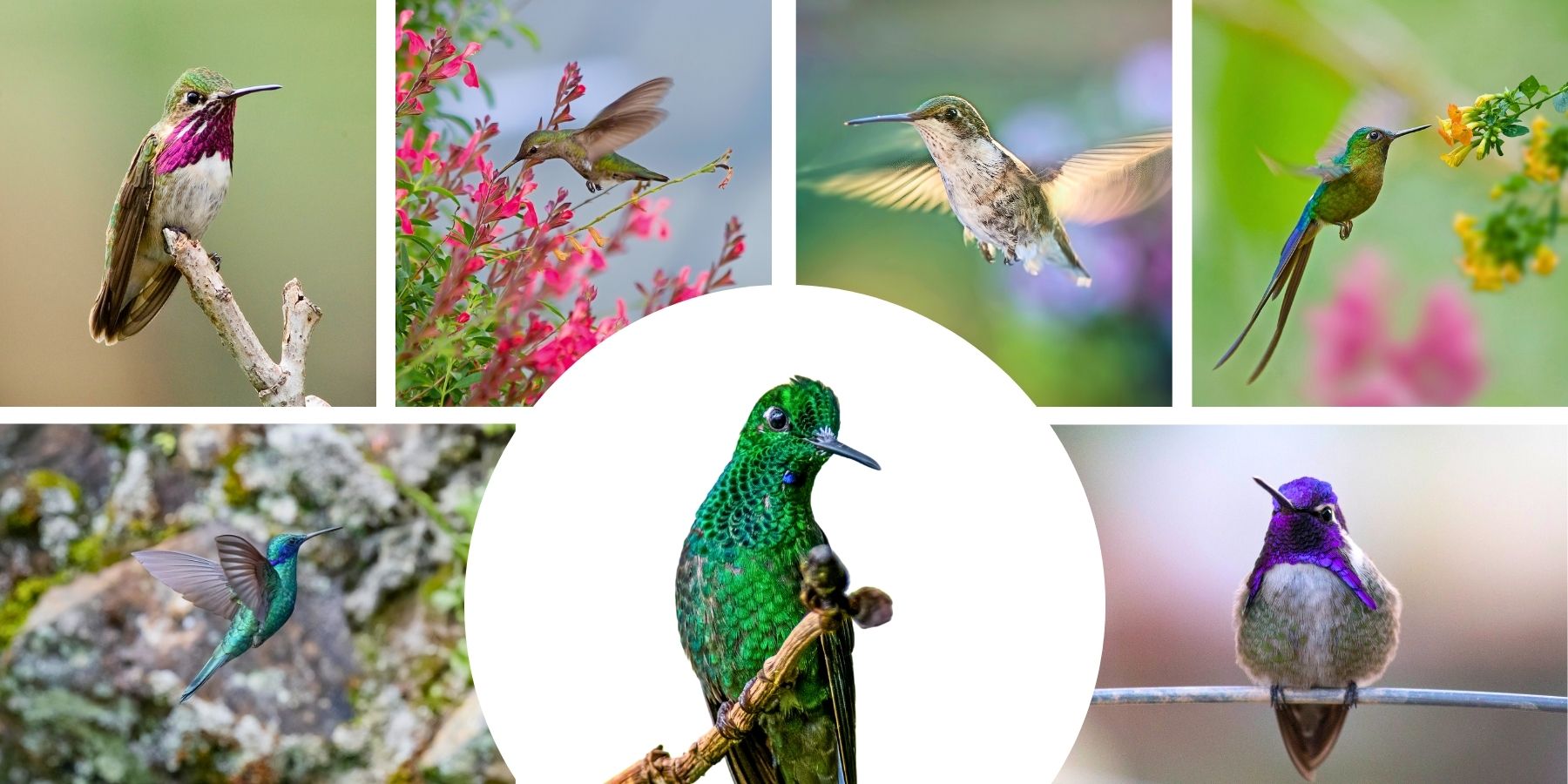Hummingbirds are among the smallest and most beautiful birds in the world. They also have great character and their flight is unique. Its beautiful plumages have bright and iridescent colors and give rise to the most curious names: Angel of the Royal Sun, Forked-Tailed Nymph, Purple-crowned Hummingbird-Fairy, Black-breasted Star, Golden-tailed Sapphire, etc.
Why do hummingbirds charm the world? The charm of these tiny birds comes from their very small size mixed with their energy: they can flap their wings up to 80 times per second, stay still in the air like small helicopters, and even fly backward. Also, hummingbirds are between 5 and 20 cm long, depending on the type, and they weigh from 2 to 20 g. Their feathers are shiny: the parts of their feathers bend light, making shiny metal-like effects that change depending on how you look at them. For flying, they are the only birds that can flap their wings in a continuous "8" shape, which lets them move up and down, stay in one spot, and do amazing moves at high speed.
They only inhabit America and there are around 360 hummingbird species, which makes them one of the most numerous families of birds, although some species may already be extinct.
In Peru there are 124 hummingbird species, of which 14 are endemic, that is, they only inhabit Peru. Although they are distributed throughout the country, they are more abundant in tropical areas.
Diversity of Hummingbirds in Peru and the World
The Trochilidae Family (360 global species)
Hummingbirds belong to the Trochilidae family, one of the most diverse bird families in the American continent. With about 360 known species, this family shows true adaptability: hummingbirds have changed to live from the Andean highlands to tropical jungles, each with special features. They are found only in America, from Alaska to Tierra del Fuego, though most of them are in the tropical parts.
Presence of Hummingbirds in Peru (124 species, 14 endemic)
Peru is one of the countries with the most hummingbirds in the world, having 124 species within its land. Of these, 14 are endemic, meaning they are not found anywhere else on Earth. This high number is because of the country's many different natural areas (from the coast and mountains to the Amazon jungle), which offer very different places to live. Some important Peruvian species are the Marvelous Spatuletail (Loddigesia mirabilis), with its amazing split tail, and the Golden-tailed Sapphire (Chrysuronia oenone), known for its shiny feathers.
Areas with the most abundance
Though hummingbirds are found in different parts of Peru, most of them are in tropical areas, especially where the jungle begins and in the Amazon. These places give them plenty of food (like flower nectar, small insects, and water), as well as thick plants for nests and safety. In contrast, in high Andean or drier areas, the number of species goes down, but even there, amazing adaptations allow some species to live at over 13,000 feet above sea level, like the Giant Hummingbird (Patagona gigas), the biggest in the world.
Birdwatching In Perú
Best Birding Destination
Filled with amazing and biodiverse habitats ranging from arid plains to mountains to rainforest. Peru is one of the few privileged destinations in the world to observe birds, moreover, There is a magnificent habitat for the 1858 species of birds recordered in the country.
One of the central reasons is because it has the second largest extension of Amazonia, a fact that is essential.
The country has one of the biggest bird lists in the world, with 107 endemic bird species.
The potential of Peru as a tourist destination for birdwatching is huge and must be exploited. A single trip is not enough to discover all the wonders that Peru has to offer. With more than 1800 bird species, 106 of which are endemic, Peru is a true paradise of birdwatching!
 |
 |
 |
Birding in Machu Picchu
There are many good reason to visit these Inca ruins and birding definitely adds to the long list. The habitat surrounding the ruins are probably the best place to see Inca Wren and another elusive endemic like Parodi’s Hemispingus. Many birders see their first Andean Coock-of-the Rock along the railway near Aguas Calientes and Torrent Duck by the Urubamba river. At the ruins, keep an eye open for flycatchers such as Streak-throated, Bush-Tyrant and White-winged Black-Tyrant.
The route
- Starts in Tarapoto, where you must visit the Aconabikh Reserve, 40 minutes from the city, in the Cordillera Escalera. It has large gardens and fountains that hummingbirds in Peru love. In this wonderful place you can find the rare and special Koepcke's Hermit and other amazing Peruvian hummingbirds like the Gould's Emerald, the Black-bellied Thorntail, and the Black-throated Brilliant. These are some of the best examples of the incredible world of Peruvian hummingbirds.
- The next place is Moyobamba, a welcoming city three hours from Tarapoto, which has an excellent reserve called Waqanki. Here you can see one of the most beautiful hummingbird species in Peru: the Rufous-crested Coquette, along with the White-bellied Sapphire, the Brown Violetear, the Long-tailed Hermit, and more than 20 other species, making it a great place to see hummingbirds.
- At km 400 of the Belaunde Highway, in the town of Aguas Verdes, is the Arena Blanca Reserve. It has large gardens and good feeders where you can see the beautiful Crested Spinetail, Rufous-crested Coquette, Long-billed Starthroat, Golden-tailed Sapphire, Amethyst Star, Blue-fronted Lancebill, among other important examples of hummingbirds in Peru.
- The next spot is inside the Alto Mayo Protected Forest, in a place called Llantería, where you can see the rare Green Hermit and the Ecuadorian Sicklebill, and if you are lucky, the White-tipped Sicklebill. This area is key for spotting hummingbirds in the Andes, a unique experience for lovers of Peruvian birds.
- At kilometer 374 of the Belaunde Highway, right in the Andean cloud forest, is the Fundo Alto Nieva Reserve. In this wonderful place you can see and photograph the beautiful and sought-after Royal Sunangel, the Green-backed Woodnymph, the Violet-fronted Brilliant, the Rufous-vented Whitetip, and the Collared Inca. Also, you can see long-tailed hummingbird species in the Andes like the Booted Racket-tail and the Long-tailed Sylph, symbols of the Andean hummingbird.
- A few minutes away, at the Owlet Lodge feeders (km 364), you can find the Sword-billed Hummingbird and the rare Emerald-bellied Puffleg, both symbols of Peru's hummingbirds for their unique beauty.
- In Huembo, near the town of Florida Pomacochas, you can find the Marvelous Spatuletail, one of the smallest but most famous and amazing Peruvian hummingbirds in the world, along with others like the Andean Emerald. This area is one of the most recommended for those who want to see the symbol of the Peruvian hummingbird in its natural home. From this point, if you have time, we recommend continuing the trip to Leymebamba, located 3 hours and 30 minutes from Huembo, where Kenti Tambo is. This is a key spot where you can find the beautiful Rainbow Starfrontlet, another gem among hummingbirds in Peru.
- Also, as part of the attractions of the different reserves along the route, you will find many other birds in Peru, like the beautiful tanagers, the rare antpittas, and many more examples of the incredible richness of Peruvian birds.
All these places can be visited easily, as the road is paved and in good condition. While there is public transport, it is recommended to use private transport to make better use of your time and have more chances to discover where to see hummingbirds in their natural home.

Hummingbirds of Perú
It is advisable to go as part of a specialized tour or with a local guide. This way you can observe and photograph other hummingbirds of Perú that you will hardly see on your own.
-
Giant hummingbird
The Giant Hummingbird (Patagona gigas peruviana) is also known as the Giant Hummingbird. Its habitat extends throughout the extreme north and south of Peru, from 1500 meters above sea level.
The Giant Hummingbird is the largest hummingbird in the world, it is recognized for its way of flying, slower than that of other hummingbirds and reminiscent of a large swallow. The Giant Hummingbird has an elongated body from 23 cm to 24 cm (energetic for its species) and a forked tail. It weighs more than 20 grams. It is light brown with a white underside. It has a 4cm peak. Its main food is the flowers that grow in the semi-arid regions of the Andes of Peru.
In Peru there are around 100 species of hummingbirds and in the world more than 300. Hummingbirds are birds only from the Americas, they do not exist in other continents. The word "hummingbird" is of Caribbean origin and means resplendent area. -
Blue-throated Star Hummingbird
The hummingbird called "blue throated star" has only about 300 specimens, according to researchers' estimates. Its habitat is a paramo that is between the provinces of Loja and El Oro (Ecuador), both bordering Peru.
The animal of just 11 centimeters in length then caught his attention and, through the binoculars, he detailed this species that he did not have in his record. The small bird exhibited a neck of deep blue plumage, a white bib marked with two black stripes and an emerald green head.
The bright colors and the shape of the beak are the hallmarks of each hummingbird species.
Similar to the color of a sapphire, the blue plumage of the Oreotrochilus cyanolaemus is a vanity that nature gave to get a mate. Hummingbirds are birds "that live on the razor's edge, live on the edge," emphasizes the ornithologist.
During the day his heart beats 1,600 times per minute, but at nightfall his heart rate drops to about 200 beats per minute. Thus they survive the extreme cold of the moors. -
Wonderful hummingbird or Spoonbill tail (Loddigesia mirabilis, Marvelous spatuletail)
The Marvelous Spatuletail is considered one of the most unique birds in the world and is the only member of the genus Loddigesia. It is an endemic species of the Utcubamba River basin, in the high jungle of northern Peru.
It is medium-sized; the male measures up to 15 cm in length, but this measurement includes its two long tail feathers. Its body is small, with an approximate weight of only 3 grams. It feeds on the nectar of specific flowers from the region and, occasionally, small insects.
This bird has a very restricted distribution range (endemic). It is found only on the edges of the high jungle and the shrubby valleys of the Utcubamba River basin, in the regions of Amazonas and San Martín, in northeastern Peru. It is estimated that just over 700 individuals currently exist, under conditions where the rule indicates that a species is in danger of extinction when its number is less than 1500.
Where to see these hummingbirds of Perú?
The Colca Valley has a great variety of attractions to offer, including the diversity of birds that we can see, one of the most favored places for bird watching is in Las Casitas del Colca.
- Giant Hummingbird (Patagona gigas)
- Black Metaltail (Metallura phoebe)
- Sparkling Violetear (Colibri coruscans)
Hummingbird in Machu Picchu Cusco
Bird watching is a hobby that more and more people practice, but those who are passionate about these animals will find that "Machu Picchu is a true paradise for bird watching". Enjoy bird watching at Machu Picchu, this Historic and Natural Sanctuary offers great opportunities for bird watching, whether you are a beginner or a professional bird watcher.
When is the best time to see hummingbirds in Machu Picchu Cusco?
Well Machu Picchu is a paradise for bird watching throughout the year; however, the best opportunities can be obtained during the dry season. The climate of Machu Picchu, has 2 very marked seasons and without a doubt the best season for bird watching occurs between the months of April and October, the days are sunny and warm. Although coming to Machu Picchu in the rainy season has many advantages, it is not exactly the best time for bird watching.
What do I need to be able to observe hummingbirds in Machu Picchu Cusco?
Do not be distracted by buildings such as the Temple of the Condor in Machu Picchu, a high resolution camera and the entrances to Machu Picchu; You will not be able to see birds in Machu Picchu without Machu Picchu tickets and these have to be reserved in advance.
Other things you will need for birdwatching in Machu Picchu
Let's say that the elemental is wearing it, your senses, refine them as much as possible. Depending on how much your interest in birds is, here is a list of things that can help you while you watch birds in Machu Picchu, however we recommend that you bring only what is absolutely necessary, large backpacks are not allowed in Machu Picchu. If you want to delve into the exciting world of birds in Machu Picchu, there are some basic materials.
- A small notebook and pencil to write down anything interesting just at the moment of observation, when your mental image is fresh.
- Long range binoculars, 10 X 40 or 10 X 50, try not to be too heavy.
- A bird guide to identify the observed species is very necessary.
- Try that your clothing is muted colors, so you can go as unnoticed as possible, we also remind you that Machu Picchu is a lush green environment.
- Machu Picchu is located between the Andes Mountains and the Amazon jungle; It may come in the dry season, but you still need to bring a poncho with you as it may rain at any time.
- The sun is very strong during the dry season in Machu Picchu, as well as the radiation, so protect your skin, sunscreen, glasses, a wide-brimmed hat and don't forget a good mosquito repellent, you will need it in Machu Picchu.
- Hat, glasses and others to protect yourself from the sun; radiation is very strong in this area of the planet, so take care of your skin.
 |
 |
Rules for birdwatching in Machu Picchu
Machu Picchu will offer you excellent moments of observation, but do not forget that it is a nature reserve and that all species are protected, so you must avoid in any way damaging the birds, their nests; well actually it is forbidden to damage any species of flora and fauna in the Machu Picchu National Park. Also, no matter how cute the bird you saw is, don't break through the lanyards. It is very dangerous to cross the security lines in Machu Picchu, especially in the Huayna Picchu mountain, where a false step can lead to falling hundreds of meters.
Places near Machu Picchu for birdwatching
Actually, Peru has many impressive places for bird watching, but there are some that are close to Machu Picchu:
- Huacarpay lagoon
- the Incas' Sacred Valley
- Open Malaga
- 4 day Inca Trail Tour
- 2 day Inca Trail
- Machu Picchu 3 day hike
- 2 day Inca Trail with camping
- One day Inca Trail
Other Treks to see Hummingbirds in Perú
- Lares Trek to Machu Picchu
- Choquequirao Trek 5 Days.
- Choquequirao to Machu Picchu Trek
- Choquequirao Trek 4 Days
What birds can be seen in Machu Picchu?
Within the 352,590 hectares protected by the Historic Sanctuary of Machu Picchu and the mountains that surround it, they are recognized worldwide for having a high number of endemic bird species (that is, they cannot be found anywhere else on the planet). These are 406 registered species, a spectacular number considering its small size.
- Gallito de las rocas
- Pava Andina
- Tangara Azuleja
- Santa Rosita (Golondrina Azul y Blanca)
- Colibrí de Pecho Castaño
- Relojero de Montaña
- Colibrí de Vientre Blanco
- Cucarachero Inca
- Chotacabras Cola de Lira
- Caracarad de Montaña
- Pinchaflor Enmascarado
- Trogón Acollarado
- Pato de los Torrentes
- Trepador Perlado
- Tangara de Collar Dorado
- Gorrión de Collar Rufo (Pichisanka)

What hummingbirds can be seen in Machu Picchu Cusco?
Chestnut Hummingbird
- Scientific name: Boissonneaua matthewsii.
- English name: Chesnut-Breasted Coronet.
- Size: 11.5-12 cm.
- Altitude: 1,500-3,300 masl.
- Habitat: Wet montane forest.
- Other countries: Colombia, Ecuador.
- Abistation Frequency: Quite Common.
White-bellied Hummingbird
- Scientific name: Amazilia chinogaster.
- English name: Green and White Hummingbird.
- Size: 10-11 cm.
- Altitude: 1,200-3,500 masl.
- Habitat: Eastern slope of the Andes, dry Marañón forest, humid montane forest.
- Other countries: Brazil, Bolivia.
- Abistation Frequency: Quite Common.
Peruvian Hummingbird Symbol
- The surprising identity of the mysterious peruvian hummingbird symbol in the Nasca lines in Peru
- They are so vast that their beauty can only be seen from the air.
- The enigmatic Nasca lines and geoglyphs, some 400 km from Lima, were sculpted some 2,000 years ago by pre-Inca societies.
- The graphics, which measure more than 250 meters, were carved between 400 BC. C. and 1000 d. C.
- They are located in an area of about 450 square km, and many of them are geometric designs of animals and plants.
- A new study by Japanese scientists solves one of the many mysteries surrounding the figures: the identity of some of the giant birds.
Anatomical details
Japanese researchers used an ornithological approach to study more than 2,000 drawings present in Nasca. The ornithological analysis revealed that the previous hypotheses about the identity of the birds were wrong. Eda and her colleagues reclassified a bird as a hermit that had only been generically identified as a peruvian hummingbird symbol.
Exotic birds
Although the drawn species exist in Peru, they are only found in distant regions of Nasca. Hermits, for example, are a species of peruvian hummingbird symbol that lives in forests on the eastern slopes of the Andes and in the north near Ecuador.
"Our research shows that the authors of those geoglyphs drew exotic birds, not local birds."
"And maybe this is a clue to understand why they made those drawings in the future."
Scientists hope to identify more species using also remains of birds excavated in Nasca and ceramic drawings from the same period.








